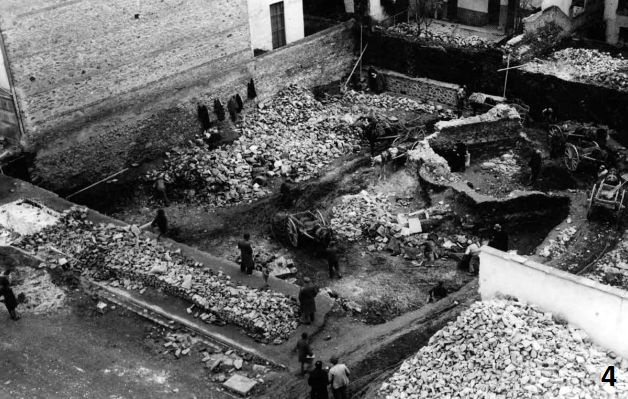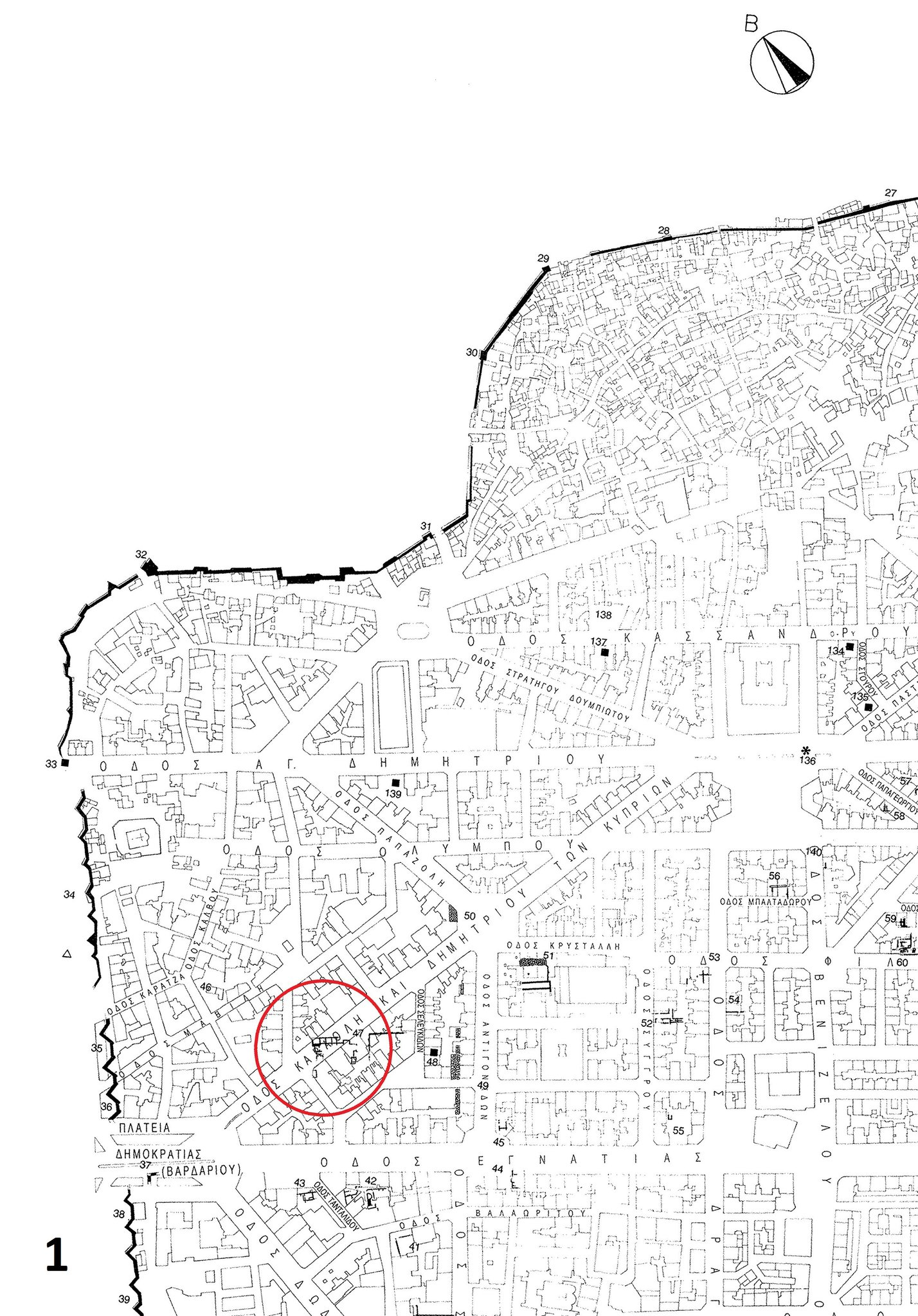Both visible and hidden, Thessaloniki daily reveals its rich historical identity and cultural diversity.
One fascinating example is the Sarapeion of Thessaloniki—an ancient temple shrouded in mystery, described by the Thessaloniki Ephorate of Antiquities as a “sanctuary that still preserves the aura of the religious mystery cult it represented for some 600 years.”
What Is the Sarapeion?
The Sarapeion was a temple dedicated to Serapis, a Greco-Egyptian deity. It stands as a unique testament to the religious fusion that characterized the late Hellenistic and Roman periods.
Who Was Serapis?
Serapis was a syncretic god created in Alexandria during the early Ptolemaic era. He combined aspects of the Egyptian god Osiris with the Greek gods Zeus or Asclepius, designed to serve as a shared deity for both Greeks and Egyptians. His worship spread widely across the Hellenistic and Roman worlds.
Part of a “Sacred Area”
The Sarapeion was discovered in the city center near Agios Minas Street during excavations in the early 20th century, undertaken during the construction of “Diagoniou Vardariou” (formerly the Administration building, now Karoli and Dimitriou Kyprion Agoniston Street).
Source: Thessaloniki City Ephorate of Antiquities
After the devastating 1917 fire in Thessaloniki, the 1921 excavation revealed an inscription and parts of the sanctuary dedicated to the Egyptian gods, called the “Sarapeion” by its first excavator, Stratis Pelekidis. Although its exact boundaries remain unknown, it likely covered a large area bordered by Karoli and Dimitriou, Eleni Svoronou, Seleukidon, and Ptolemaion streets. This privileged location was near the main western city gate and port, within the southern section of a “sacred area” where most of Thessaloniki’s temples were concentrated.
A Place of Multi-Deity Worship
The Sarapeion was primarily dedicated to Serapis but probably also honored the deities Isis and Anubis—typical of Sarapeia functioning as multi-deity sanctuaries.
Dating to the 2nd or 3rd century AD, it was built when Thessaloniki was a vital urban and administrative center of Roman Macedonia. The presence of Egyptian temples far from Egypt highlights the Romans’ tolerance of diverse forms of worship.
A Reflection of Thessaloniki’s Cultural Mosaic
The Sarapeion’s location at the heart of Thessaloniki reveals the city’s multicultural identity, with a thriving community venerating Egyptian gods.
Source: Thessaloniki City Archaeological Authority
Early excavations uncovered remains of a stoa, foundations of a small prostyle or distyle temple with a rectangular floor plan (Temple A), pebble mosaic flooring, column bases, statues, inscriptions, and religious artifacts.
A significant inscription explicitly mentions Serapis, found alongside depictions of Egyptian deities, confirming the site’s function as a place of Egyptian worship.
Statues of Isis and votive offerings discovered at the site suggest that the Sarapeion hosted mysteries and rituals similar to those known from Alexandria and Delos.
Further Discoveries and Architecture
In 1939, further excavations by S. Pelekidis and Ch. Makaronas revealed a small, possibly prostyle or distyle apse-shaped Roman temple (Temple B) with a cella and pronaos.
On the north side of the cella was a raised semicircular niche, likely for the cult statue, with a brick bench in front for placing votive offerings.
An underground vaulted chamber was also found in the temple’s northwest corner, probably used for religious rites, as evidenced by a herm pillar in a niche on the east wall. This space was connected to an underground corridor without direct access from the main temple and was sealed off in antiquity. Makaronas described it as a “crypt,” possibly a place of mystery worship for the Egyptian gods.
A plaster model of the site is now exhibited at the Archaeological Museum of Thessaloniki.
Later Excavations and Significance
Excavations in 1957 at the junction of Dimitriou/Karoli and E. Svoronou streets uncovered sculpture fragments and inscriptions.
The sanctuary was notable not only for its numerous statues and offerings but also for over 70 Greek inscriptions documenting the worship of the gods, making it one of the best-documented ancient religions.
Image Source: Archaeological Museum of Thessaloniki
Though possibly founded privately, its management was under state or royal supervision. It was accessible to the public and associated with public festivals.
The mention of a “hydreion” (water basin) underscores the importance of water in rituals, possibly for purification.
The sanctuary ceased operation in the 4th century AD, and the area remained undeveloped for centuries.
The Colossal Head of Serapis
One of the most striking finds is a colossal marble head of Serapis, dated to the Roman period (2nd century AD), housed at the Archaeological Museum of Thessaloniki. The cult of Serapis was introduced to Thessaloniki in the 3rd century BC, quickly gaining prominence.
This iconographic type, featuring long hair, a full beard, deep-set eyes, and an idealized expression, was created by the renowned late Classical sculptor Bryaxis in the 4th century BC. It blended Egyptian traits with characteristics of Zeus and Pluto, influencing all later depictions of the god.
Also from the Sarapeion site is a colossal marble female head, likely representing Isis.










